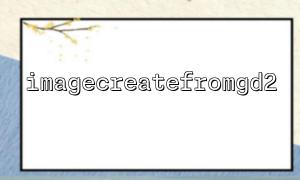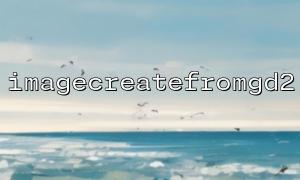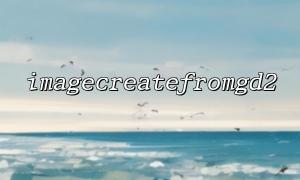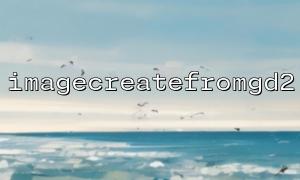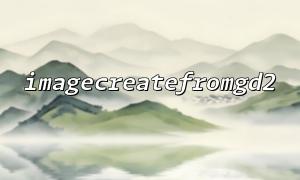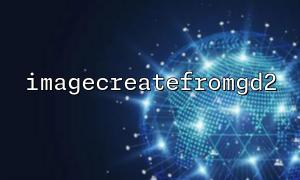In PHP, processing images is a common requirement, especially processing avatars. The imagecreatefromgd2() function is a powerful feature in the PHP GD library. It can create an image resource from an image file in .gd2 format, which is very useful for dynamic generation or modification of avatars. This article will introduce how to use the imagecreatefromgd2() function to handle avatars.
The imagecreatefromgd2() function is a function in PHP's GD image processing library, which is mainly used to create image resources from an image file in .gd2 format. This function returns an image resource identifier, and then various processing can be performed on the image, such as cropping, scaling, rotation, etc.
resource imagecreatefromgd2(string $filename);
Parameters : $filename — The path to the .gd2 file that needs to be read.
Return value : If successful, return the image resource identifier; if failed, return FALSE .
Suppose you have a .gd2 avatar image and want to do cropping and scaling operations, the following is a simple example:
<?php
// Read .gd2 Format picture
$image = imagecreatefromgd2('uploads/avatar.gd2');
// 检查是否成功Read图片
if ($image === false) {
die('无法Read头像文件!');
}
// Get the width and height of the image
$width = imagesx($image);
$height = imagesy($image);
// Suppose we want to crop the center part of the avatar
$new_width = 150;
$new_height = 150;
$src_x = ($width - $new_width) / 2;
$src_y = ($height - $new_height) / 2;
// Create a new image resource
$new_image = imagecreatetruecolor($new_width, $new_height);
// Crop the original image and copy it to the new image
imagecopyresampled($new_image, $image, 0, 0, $src_x, $src_y, $new_width, $new_height, $new_width, $new_height);
// Save a new avatar
imagejpeg($new_image, 'uploads/processed_avatar.jpg');
// Release image resources
imagedestroy($image);
imagedestroy($new_image);
echo 'Avatar processing was successful!';
?>
Loading the avatar file : imagecreatefromgd2('uploads/avatar.gd2') will read the avatar image in .gd2 format. If the path or file format is incorrect, false will be returned.
Get image size : Use imagesx($image) and imagesy($image) to get the width and height of the image.
Crop and Zoom : We choose to crop a 150x150 pixel area from the center of the avatar image. Image cropping and scaling are implemented through the imagecopyresampled() function.
Save the processed image : Use imagejpeg() to save the cropped image in JPEG format, with the path uploads/processed_avatar.jpg .
Free resource : Use imagedestroy() to free up image resources to save memory.
In actual projects, avatar images may be stored on different servers. If you want to replace the file URL with a specific domain name, it can be done with a simple string replacement. For example:
$original_url = 'http://example.com/uploads/avatar.gd2';
$processed_url = str_replace('example.com', 'm66.net', $original_url);
echo 'Processed avatar URL: ' . $processed_url;
In addition to cropping and scaling, PHP's GD library also provides many image processing capabilities, such as:
Rotate image : Use imagerotate() to rotate the image.
Add watermark : Imagecopy() or imagecopymerge() can be used to add a watermark image to the avatar.
Adjust brightness and contrast : imagefilter() can be used to adjust the brightness and contrast of an image.
You can combine these functions according to your needs to implement more complex avatar processing functions.
imagecreatefromgd2() is an important function in PHP for processing .gd2 image files. Through it, we can easily perform avatar processing. This article introduces how to load avatar, crop, scale and save processed images, and also provides a simple URL replacement method to replace image domain names. Through PHP's GD library, you can flexibly process images to meet various needs.
Hope this article helps you! If you have any other questions, you can ask them at any time.
